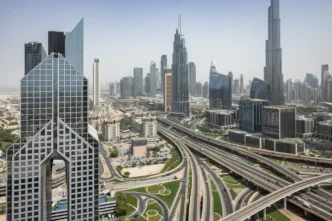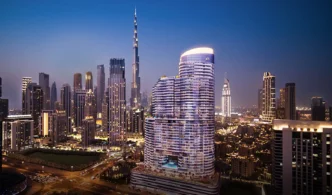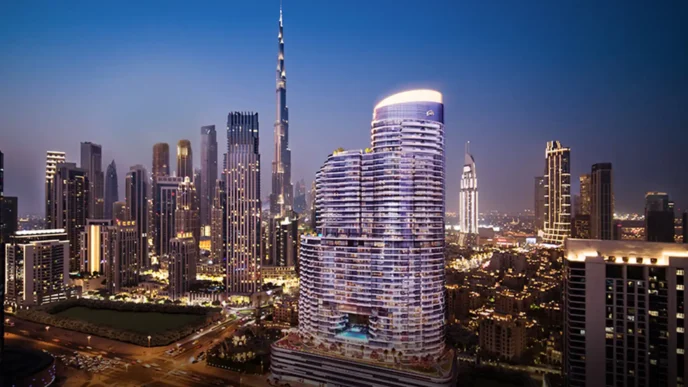Dubai’s property market is in the midst of one of its most powerful expansions in decades — a surge driven by foreign investment, luxury demand, population growth, and a massive influx of global wealth. Developers are racing to build the next wave of mega-projects, from branded residences and waterfront districts to smart-city enclaves and ultra-premium villas.
But behind the record-breaking sales and soaring valuations, another trend is accelerating beneath the surface:
Developers have embarked on a $6 billion debt-raising spree, creating a swelling wall of maturities that could test the resilience of the region’s hottest market.
This debt buildup underscores the growing confidence — and potential vulnerabilities — in a sector that has become a cornerstone of Dubai’s economic engine.
A Market on Fire: Why Developers Are Borrowing So Aggressively
Dubai’s real estate demand has reached levels unseen since the 2006–2008 boom, but with one critical difference: today’s surge is supported by stronger fundamentals.
1. Record Foreign Investor Inflows
Buyers from Europe, Russia, China, South Asia, and Africa are pouring capital into Dubai, seeking:
- Political stability
- Tax advantages
- Luxury lifestyle
- Strong rental yields
Prime areas like Palm Jumeirah, Dubai Marina, JLT, Downtown, and Business Bay have seen price surges of 20–40% in some segments.
2. A Race to Launch New Projects
Major developers — both private and semi-government — are accelerating launches to capitalize on unprecedented demand.
Debt funding provides:
- Quick access to liquidity
- Cash flow for land acquisition
- Capital for large-scale construction phases
- Flexibility during multi-year project cycles
3. Attractive Bond Market Conditions
Although global borrowing costs are elevated, investor appetite for Middle Eastern credit remains strong. Dubai developers have leveraged this window to issue:
- Sukuk
- Dollar bonds
- Green bonds
- Structured private placements
Result: a flood of issuances over the last 18 months.
A $6 Billion Wave of Debt — and Rising Risks
The rapid accumulation of developer debt has also created a growing maturity cliff.
1. The Maturity Surge
Over the next three to five years, billions in developer obligations are set to come due.
This includes:
- Short-term notes
- Sukuk redemptions
- Refinancing bullets
- Project financing loans
- Bond maturities
The concentration of these obligations could strain balance sheets if market conditions shift.
2. Reliance on Continued Sales Momentum
Developers are counting on:
- Off-plan sales
- Strong prepayment inflows
- Elevated property prices
These revenue streams are essential to meeting debt commitments.
A slowdown — even a modest one — could disrupt refinancing plans.
3. Rising Construction Costs
Global supply chain pressures and rising input costs — cement, steel, labor — are compressing margins.
Higher costs + high leverage = tighter financial breathing room.
4. A Competitive Landscape
With so many simultaneous launches, developers face:
- Competition for buyers
- Tighter land availability
- A fight for construction capacity
- Pressure to offer incentives
Margins become razor-thin when debt loads are high.
Why Investors Are Still Confident — for Now
Dubai’s property market has evolved significantly since the 2009 crash. Several factors support stability:
1. Better Regulation and Escrow Systems
Stricter rules ensure:
- Buyer funds are secured
- Construction-linked payment models
- Lower speculative flipping
- Controlled leverage
2. Population Growth and Economic Expansion
Dubai continues to attract:
- Entrepreneurs
- High-net-worth individuals
- Remote workers
- Global corporations
This organic demand underpins real estate absorption.
3. Diversification Beyond Luxury
Developers are launching:
- Mid-market housing
- Branded residences
- Smart-city integrated communities
- Hospitality-led mixed-use projects
A broader base protects against concentrated risk.
4. Government Support and Smart Policy
Dubai’s leadership has consistently:
- Maintained pro-investment policy
- Upgraded visa reforms
- Supported business-friendly regulation
- Encouraged sustainable development
These policies reinforce market confidence.
The Wall of Maturities: A Real Test Ahead
Despite strong fundamentals, the maturity wall cannot be ignored.
Key Risks Emerging:
1. Refinancing Pressure
If global credit conditions tighten, developers may face higher borrowing costs—or struggle to refinance altogether.
2. Liquidity Crunch During Market Cooling
A slowdown in off-plan sales could create simultaneous revenue pressure and debt repayment needs.
3. Overleveraging in Mega-Projects
Some developers are taking on multi-billion-dollar commitments, pushing leverage ratios to multi-year highs.
4. Systemic Ripple Effects
While the system is more resilient than in 2009, a large developer missing obligations could still shake investor confidence.
What Happens Next?
1. More Bond Issuances Are Likely
Developers will continue tapping capital markets as long as investor demand stays robust.
2. Expect Consolidation
Stronger developers may acquire distressed projects or weaker rivals as the maturity wall approaches.
3. Diversification into Alternative Financing
We may see:
- Sovereign wealth partnership deals
- Private equity injections
- International co-development models
- Real estate investment trusts (REITs)
4. A Soft Landing — If Sales Stay Hot
As long as demand holds, Dubai can absorb the debt boom without destabilizing the market.
Conclusion: A Market of Opportunity — and Growing Complexity
Dubai’s real estate revival has triggered a powerful wave of developer borrowing — a $6 billion debt spree that underscores both the ambition and the intensity of the current boom.
The frenzy reflects a market with unprecedented energy, but it also introduces new layers of financial risk.
The coming years will test whether developers can navigate rising obligations without compromising the stability of Dubai’s most vital industry.
If momentum holds, Dubai’s property sector will emerge stronger, more sophisticated, and more globally dominant.
But if conditions tighten, the debt wall will expose which developers built responsibly — and which ones flew too close to the sun.














